ALEX DENYSENKO: HAVE CLASS; WILL RACE
Fri, 2009-03-06 20:54
Eight years ago Super Stock racer Alex Denysenko had a vision.
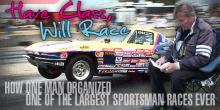
The veteran racer from Michigan City, Ind., believed that he could assemble an event featuring the performance oriented sportsman divisions, i.e. the class racing divisions, the headliners on a national event style event. He wanted to prove that one didn’t need nitro or any professional divisions to hold a successful drag race.
Denysenko will always have the 2001 U.S. Class Nationals as proof he was right.
After a lifetime of racing experience, Denysenko will quickly tell you he putting on the 2001 U.S. Class Nationals at Byron Dragway in Byron, Ill., is in a class of its own.
“It would be right up there with the craziest things I’ve ever done,” Denysenko admitted. How One Racer Remains Determined to Keep Class Racing Alive …
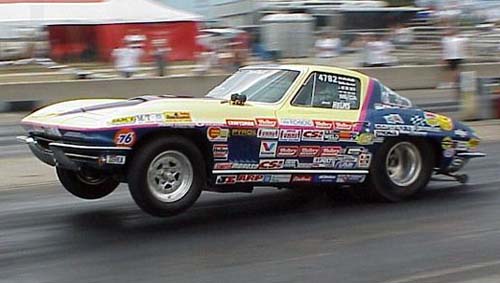
Eight years ago Super Stock racer Alex Denysenko had a vision.
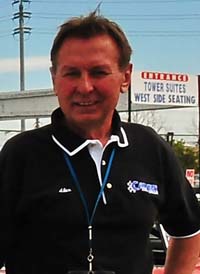
The veteran racer from Michigan City, Ind., believed that he could assemble an event featuring the performance oriented sportsman divisions, i.e. the class racing divisions, the headliners on a national event style event. He wanted to prove that one didn’t need nitro or any professional divisions to hold a successful drag race.
Denysenko will always have the 2001 U.S. Class Nationals as proof he was right.
After a lifetime of racing experience, Denysenko will quickly tell you he putting on the 2001 U.S. Class Nationals at Byron Dragway in Byron, Ill., is in a class of its own.
“It would be right up there with the craziest things I’ve ever done,” Denysenko admitted.
It would also rank right up there with one of the more successful too.
A total of 416 class cars ranging from the quickest of the Super Stock divisions to the slowest of the Stockers made the tow to the monumental event. There was also a collection of Outlaw Nostalgia Super Stockers in the mix, in addition to purpose-built Top Stockers that comprised what
arguably could have been drag racing’s version of Woodstock.
This was the first time any race had successfully combined NHRA and IHRA class cars under the same umbrella.
“It confirmed what I knew and that was that class racing was alive and well, and given the proper set of circumstances you could have an outstanding turnout of the top racers in the country and a reasonable turnout of fans,” Denysenko said. “You have to offer the racers a reasonable purse to run for and the fans a reasonable expectation of entertainment for their dollar. And, we succeeded on both counts.”
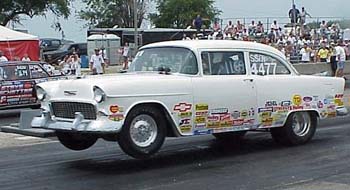 The real inspiration for the event, Denysenko revealed, was the declining attitude from both sanctioning bodies towards the class racing divisions. The U.S. Class Nationals was as much about commanding respect as it was to have a large race for the specialty cars.
The real inspiration for the event, Denysenko revealed, was the declining attitude from both sanctioning bodies towards the class racing divisions. The U.S. Class Nationals was as much about commanding respect as it was to have a large race for the specialty cars.
Denysenko raced the IHRA World Nationals in Norwalk, Ohio the year before, winning four rounds of competition and for his efforts he left the track with a whopping $100 in prize money. The next weekend he made his way to the quarter-finals of the NHRA U.S. Nationals in Indianapolis, the most prestigious drag race in the world, and took home $500.
“I knew at that moment that someone needed to do something for the Stock and Super Stock racers,” Denysenko said, in an interview just days before his event. “We spend a week at the races, especially at those two. We are relegated to the back of the bus in everything, including parking, our run schedule and when we can run. There’s never a real schedule and we never run for any sizeable purse, yet we pay the most entry fee of any class contested. For the work and effort that we put into our cars, we get the least amount of compensation.”
Denysenko doesn’t look down on the other sportsman divisions or bracket racing, but believes the roots of drag racing can be directly traced back to Stock, Super Stock and to a point Competition eliminator, since Modified was disbanded in the 1980s.
“We don't look down on them as much as we feel they're not really racing,” Denysenko said. “They're [Super gas racing] taking cars and building them to go fast and then spending money to slow them back down again.”
Denysenko admits his passion with class racing began as a kid but sadly laments he’s watched this style of spec drag racing deteriorate through no fault of those competing but rather because class cars require the greatest amount of technical inspection.
History backs up his belief. The NHRA once cited the ease of technically inspecting a Super Gas entry over Modified as one of their reasons for the discontinuation of the class.
Denysenko believed in 2001 that class racing was living on borrowed time and sadly eight years later, his feelings haven’t changed.
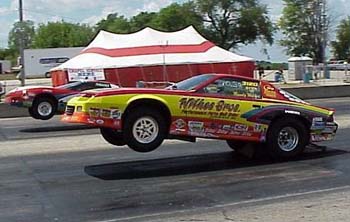 “They’re not looking to expand us, but rather they are looking to consolidate us,” Denysenko told CompetitionPlus.com. “We’re too difficult to maintain. We are high maintenance, as it has been said. We require specified tech. When you have a bracket car or Super Gas car, you just require a safety check. You don’t have to have spec carburetor or spec cylinder heads and transmission. That is us. We have to have all of that.”
“They’re not looking to expand us, but rather they are looking to consolidate us,” Denysenko told CompetitionPlus.com. “We’re too difficult to maintain. We are high maintenance, as it has been said. We require specified tech. When you have a bracket car or Super Gas car, you just require a safety check. You don’t have to have spec carburetor or spec cylinder heads and transmission. That is us. We have to have all of that.”
That kind of oversight requires an experienced inspector.
“You have to have someone that can tell the difference between all of them and you have to have books,” Denysenko added. “There’s not enough return on their investment. They say that there is no fan appeal for us. Sure, that’s because the fans are usually at work when they start running us down the track on Thursdays or Fridays. By the time the fans show up on Saturday, two-thirds of us have been beaten and went home. They really can't judge for themselves how good we are and how good of a show we put on. Then, they use us as filler on Saturday and Sunday.”
That’s why Denysenko felt the 2001 U.S. Class Nationals proved a point along with over 5,200 paid spectators. The success of the first event inspired a U.S. Class Nationals II for 2002.
The event never happened.
“We had a contract in place with sponsorship for the event but it got cancelled after 9-11 put a dent in the economy,” Denysenko added. “That was so disheartening of an experience that we never could get the momentum back.”
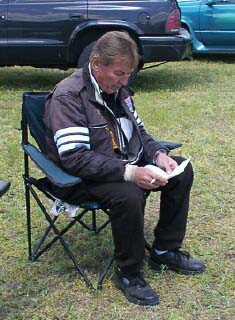 The pendulum could be swinging the other way revealed Denysenko when asked if there would ever be another Class Nationals.
The pendulum could be swinging the other way revealed Denysenko when asked if there would ever be another Class Nationals.
“Funny you should ask,” Denysenko answered. “There is a proposal on the table now. Several people have approached me and several sponsors, to do another one. I'm in the process of making a decision.”
He’s quick to point out this time the event will be bigger and better than the first one and expand to include a version of the old school Modified eliminator as well as today’s Competition eliminator.
“We would invite everybody who has an old or current car within the spirit of the old Modified Production rules and they would run in what we would call Modified Comp,” Denysenko explained. “One of our staffers is a former NHRA/IHRA tech man who still has all the old manuals dating
back to the 70's and we would allow just about anything in an old Modified Production car to come and run with Competition eliminator – with the appropriate indexes. So, it would be open to any performance category, basically, within NHRA and IHRA rules.”
Denysenko added that a television package is in the works similar to the one back in 2001 and while the purse paid a hefty $5,000 to win, $2,500 to runner-up in both the Stock and Super Stock divisions, the next event is expected to double that amount.
“Next year makes the most sense,” Denysenko said. “It would be bigger and better than the first both in purse and participation. Our goal would be for 1000 class cars show up at this event.”
Denysenko confirmed there are over 5,000 licensed Stock, Super Stock and Competition eliminator racers in the United States and Canada.
The question remains, the 2008 NHRA U.S. Nationals drew 410 class entries [Comp, Super Stock, Stock], could the U.S. Class Nationals draw over double?
“Absolutely it can,” Denysenko added. “Ask around, I’m not the only one passionate about this kind of racing. I’m probably about the only one with the determination it takes to pull it off.”

The veteran racer from Michigan City, Ind., believed that he could assemble an event featuring the performance oriented sportsman divisions, i.e. the class racing divisions, the headliners on a national event style event. He wanted to prove that one didn’t need nitro or any professional divisions to hold a successful drag race.
Denysenko will always have the 2001 U.S. Class Nationals as proof he was right.
After a lifetime of racing experience, Denysenko will quickly tell you he putting on the 2001 U.S. Class Nationals at Byron Dragway in Byron, Ill., is in a class of its own.
“It would be right up there with the craziest things I’ve ever done,” Denysenko admitted. How One Racer Remains Determined to Keep Class Racing Alive …

Eight years ago Super Stock racer Alex Denysenko had a vision.

A longtime Super Stock racer, Alex Denysenko has sounded the rallying cry for class racers through his U.S. Class Nationals concept. (Roger Richards)
The veteran racer from Michigan City, Ind., believed that he could assemble an event featuring the performance oriented sportsman divisions, i.e. the class racing divisions, the headliners on a national event style event. He wanted to prove that one didn’t need nitro or any professional divisions to hold a successful drag race.
Denysenko will always have the 2001 U.S. Class Nationals as proof he was right.
After a lifetime of racing experience, Denysenko will quickly tell you he putting on the 2001 U.S. Class Nationals at Byron Dragway in Byron, Ill., is in a class of its own.
“It would be right up there with the craziest things I’ve ever done,” Denysenko admitted.
It would also rank right up there with one of the more successful too.
A total of 416 class cars ranging from the quickest of the Super Stock divisions to the slowest of the Stockers made the tow to the monumental event. There was also a collection of Outlaw Nostalgia Super Stockers in the mix, in addition to purpose-built Top Stockers that comprised what
arguably could have been drag racing’s version of Woodstock.
This was the first time any race had successfully combined NHRA and IHRA class cars under the same umbrella.
“It confirmed what I knew and that was that class racing was alive and well, and given the proper set of circumstances you could have an outstanding turnout of the top racers in the country and a reasonable turnout of fans,” Denysenko said. “You have to offer the racers a reasonable purse to run for and the fans a reasonable expectation of entertainment for their dollar. And, we succeeded on both counts.”
a d v e r t i s e m e n t
Click to visit our sponsor's website

At the original U.S. Class Nationals, variety ruled the entry list. For as many of the late-model, automatic Super Stockers, there just as many old school, high-winding stick classics like this 1955 Chevy.
Denysenko raced the IHRA World Nationals in Norwalk, Ohio the year before, winning four rounds of competition and for his efforts he left the track with a whopping $100 in prize money. The next weekend he made his way to the quarter-finals of the NHRA U.S. Nationals in Indianapolis, the most prestigious drag race in the world, and took home $500.
“I knew at that moment that someone needed to do something for the Stock and Super Stock racers,” Denysenko said, in an interview just days before his event. “We spend a week at the races, especially at those two. We are relegated to the back of the bus in everything, including parking, our run schedule and when we can run. There’s never a real schedule and we never run for any sizeable purse, yet we pay the most entry fee of any class contested. For the work and effort that we put into our cars, we get the least amount of compensation.”
Denysenko doesn’t look down on the other sportsman divisions or bracket racing, but believes the roots of drag racing can be directly traced back to Stock, Super Stock and to a point Competition eliminator, since Modified was disbanded in the 1980s.
“We don't look down on them as much as we feel they're not really racing,” Denysenko said. “They're [Super gas racing] taking cars and building them to go fast and then spending money to slow them back down again.”
Denysenko admits his passion with class racing began as a kid but sadly laments he’s watched this style of spec drag racing deteriorate through no fault of those competing but rather because class cars require the greatest amount of technical inspection.
History backs up his belief. The NHRA once cited the ease of technically inspecting a Super Gas entry over Modified as one of their reasons for the discontinuation of the class.
Denysenko believed in 2001 that class racing was living on borrowed time and sadly eight years later, his feelings haven’t changed.
a d v e r t i s e m e n t
Click to visit our sponsor's website

For three blistering July days, Stock and Super Stockers wheelstood off of the launch pad at Byron Dragway.
That kind of oversight requires an experienced inspector.
“You have to have someone that can tell the difference between all of them and you have to have books,” Denysenko added. “There’s not enough return on their investment. They say that there is no fan appeal for us. Sure, that’s because the fans are usually at work when they start running us down the track on Thursdays or Fridays. By the time the fans show up on Saturday, two-thirds of us have been beaten and went home. They really can't judge for themselves how good we are and how good of a show we put on. Then, they use us as filler on Saturday and Sunday.”
That’s why Denysenko felt the 2001 U.S. Class Nationals proved a point along with over 5,200 paid spectators. The success of the first event inspired a U.S. Class Nationals II for 2002.
The event never happened.
“We had a contract in place with sponsorship for the event but it got cancelled after 9-11 put a dent in the economy,” Denysenko added. “That was so disheartening of an experience that we never could get the momentum back.”
a d v e r t i s e m e n t
Click to visit our sponsor's website

Denysenko confirmed with CompetitionPlus.com that he's already in the planning stages of the U.S. Class Nationals II, most likely to be contested at an NHRA Division 3 facility.
“Funny you should ask,” Denysenko answered. “There is a proposal on the table now. Several people have approached me and several sponsors, to do another one. I'm in the process of making a decision.”
He’s quick to point out this time the event will be bigger and better than the first one and expand to include a version of the old school Modified eliminator as well as today’s Competition eliminator.
“We would invite everybody who has an old or current car within the spirit of the old Modified Production rules and they would run in what we would call Modified Comp,” Denysenko explained. “One of our staffers is a former NHRA/IHRA tech man who still has all the old manuals dating
back to the 70's and we would allow just about anything in an old Modified Production car to come and run with Competition eliminator – with the appropriate indexes. So, it would be open to any performance category, basically, within NHRA and IHRA rules.”
Denysenko added that a television package is in the works similar to the one back in 2001 and while the purse paid a hefty $5,000 to win, $2,500 to runner-up in both the Stock and Super Stock divisions, the next event is expected to double that amount.
“Next year makes the most sense,” Denysenko said. “It would be bigger and better than the first both in purse and participation. Our goal would be for 1000 class cars show up at this event.”
Denysenko confirmed there are over 5,000 licensed Stock, Super Stock and Competition eliminator racers in the United States and Canada.
The question remains, the 2008 NHRA U.S. Nationals drew 410 class entries [Comp, Super Stock, Stock], could the U.S. Class Nationals draw over double?
“Absolutely it can,” Denysenko added. “Ask around, I’m not the only one passionate about this kind of racing. I’m probably about the only one with the determination it takes to pull it off.”
| {loadposition feedback} |
Categories:





